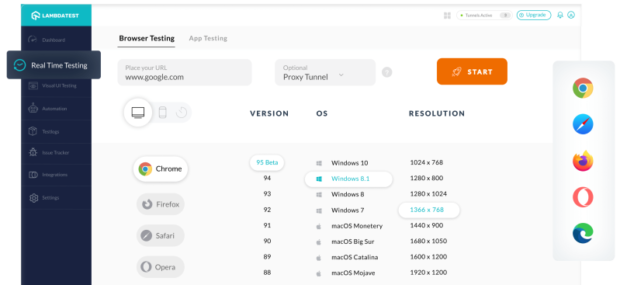Testing is more vital than development in the application development lifecycle and must not be neglected because a broken application with many features might cost money and lose a user base. Regression testing is one of the numerous types of testing that a QA team performs before the application is released in its final form.
Every time a developer makes changes to their application to introduce a new feature, the deployment of the new lines of code or even a minor adjustment has the potential to break the application’s current functioning and have unexpected effects. As a result, it’s important to make sure that any feature modifications are having the desired effects and that the application’s existing functionality hasn’t been affected.
Regression testing can play a part in this. Although it is done manually, the scope of regression keeps growing as more functionality is added to an application over time. Manually identifying and resolving issues forces the testing team to work longer hours, which can be tiresome and negatively impact their image.
Currently, automated regression testing is frequently started by the tester at the beginning of the application development life cycle. Early automation’s major responsibility is choosing a testing framework that allows for simple scripting and affordable test upkeep.
In this article, we will provide a thorough overview of the need, significance, and best practices of regression testing in applications. We will also talk about the tools and strategies to use for quick and accurate testing. Let’s begin by defining regression testing.
Regression Testing
Regression testing involves repeatedly testing any application’s or system’s current features as it gets new updates. It involves testing the program and determining whether any updates, code changes or other improvements have had an impact on its functionality.
This guarantees the application’s overall stability and functionality for both the new feature and the existing features. Regression testing involves rerunning previously completed test cases to assess the effect of the modification.
Regression testing, in other words, aids in identifying and lowering the risk of code dependencies, flaws, and malfunction so that the previously developed and tested code continues to function after modification.

Why Regression Testing
Functional tests do not examine how newly added features and updates interact with the current functionality; they just examine how they behave. As a result, without regression testing, it is challenging and most time-consuming to analyze the root cause and structures of an application.
Regression testing also makes it possible to filter the quality when the application is changed if it undergoes frequent revisions and updates. Every time new features are introduced to the code to upgrade the application, this testing makes sure that the entire application remains sustainable under constant improvement.
Regression testing aids in the detection of issues throughout the deployment stage, saving developers the expense and effort of fixing previously undiscovered flaws. The crucial component of regression testing is changing. The causes of these modifications often fall into four categories:
New functionality- One of the frequent reasons for performing regression testing is new functionality. Here, the old and new codes must work together flawlessly. The developers don’t concentrate on a new feature’s compatibility with the old code when they add it. Regression testing is responsible for identifying any potential problems.
Integration- Regression testing in this situation makes it possible to ensure that the application works flawlessly following integration with another product.
Functionality Revision- Regression testing determines whether new features are added or removed without affecting the remaining functionality when developers make changes to the existing functionality by adding or removing some features.
Solving bugs- Attempts to remedy bugs in the code frequently result in the creation of new bugs. As a result, issue fixes necessitate source code changes, demanding the necessity for regression and re-testing.
When to perform regression testing
Regression testing is appropriate in situations where-
- An application’s code is altered, including when new features, bug patches, and performance enhancements are added.
- After each update to a requirement, regression testing is performed. For instance, the login page’s remember password feature may be removed.
- When the problem is fixed by fixing code flaws. For instance, after fixing an issue in the login button, a developer will simultaneously test additional login button-related functionality in addition to re-testing the login button for expected outcomes.
- After performance problems have been resolved.
- When an environment or configuration is modified or changed.

Regression testing strategies
Now that you know why and when to perform regression testing during application deployment, it’s time to put those understandings to work by using efficient regression testing techniques. Regression testing strategy development is dependent on two key elements. Application scale and Application Nature.
The primary consideration in selecting an appropriate regression testing technique and precise regression test preparation is the nature of the application. For instance, the methods used to evaluate a landing page and an extensive professional site will be very different. Regression testing often includes user interface and usability test cases for landing pages, while it may include various test cases for application security, performance, compatibility testing, and other things for portals.
Depending on the size, scope, and complexity of the application, regression testing necessitates a varied strategy. Small applications might just need one round of manual regression testing, whereas medium- and large-scale applications with comprehensive functionality might need to run both manual and automated regression tests.
Best practices for regression testing
Following the best practices listed below will help in conducting efficient and effective regression testing.

Understanding the testing scope
Before beginning the regression testing procedure, the scope should be taken into account initially. This is significant since the goals, timeframe, and scope of the testing requirement can change. Being aware of scope discrepancies enables better planning of the execution of the regression cycle and choosing which test cases should be automated and which should be manually performed. It also includes outlining time frames and objectives for every project sprint.
Understanding every change hands-on
Developers are well aware that the one constant in regression testing is changing. So, it’s vital to understand each modification practically. To know the most recent upgraded version and to be informed of instant changes, regular contact between developers and testers is essential. To keep the delivery of the application on schedule, planning the testing is essential.
Utilizing manual testing assistance
These are some of the less complicated features that a user will frequently engage with. Hence, not every test requires automated workflows. Instead, manual test cases are sufficient to pass in this situation.
Making the right test cases automated
If used appropriately, automation offers a competitive advantage. So, it is necessary to decide which test cases are appropriate for automation before beginning the testing itself. The productivity will therefore rise and testers’ valuable time will be saved by automating the appropriate test cases.
Keeping an eye on the ROI
The primary metric used to assess the effectiveness of a regression testing campaign is the return on investment (ROI). RoI should always be monitored by QA teams using reports and advanced analytics produced by automation systems. This will make it easier to observe the real situation and the areas that want development.

Applying the Smoke and Sanity test scenarios
Before performing regression testing, smoke, and sanity testing is carried out to help the test team save time and effort. These tests assist in determining whether additional testing procedures, such as regression testing, are necessary and can be used to quickly determine whether an application is stable or not.
Prioritizing test cases
The application areas with the greatest risk of quality problems are the ones that regression testing concentrates on. To use a risk-based method, a tester must choose a test case that covers the majority of the application’s error-prone features and is impacted by even small code changes. They can also rank them by priority.
The best method to accomplish so is to categorize the test cases following the most important and frequently used application functionality. By prioritizing the test cases, it is possible to reduce the number of regression tests required and to run regression tests more frequently. Also, this would make it possible to comprehend, separate, and pinpoint various obstacles, as well as carry out efficient testing following the requirements.
Finding Bug
Several regression testing tools integrate with error analyzing tools, allowing users to view specifics of what happened during the regression test. If the test fails it helps find the specific line of code that was impacted and the failed features. Screenshots and other metrics about the failure during the regression testing are also obtained with the aid of error-tracking tools. This makes it easier to find and fix the problem.
Communication
The tester and developers’ communication helps analyze and evaluate requirements changes. Understanding the adjustments made during iteration is made easier by team communication. This makes sure that everyone in the team involved in the project is aware of it and helps the team to take the necessary actions to fully test all modifications.
When the developers and testers are able to connect with the rest of the team, understand their needs, and extensively examine the use cases to determine the expected results for testing, things go quite smoothly.
Assessing Risk
An important component of the regression automation technique should include risk analysis. Even though it is difficult and time-consuming to predict each potential problem, doing so can assist with estimating how much it will cost and how to minimize the risks.

Top Tools for Regression Testing
Testers must know the best testing tool for regression testing to get the desired results. Numerous well-known tools for regression testing can assist the tester run the tests rapidly and save a lot more time. So let’s talk about some of the most popular tools QA professionals utilize.
LambdaTest

To provide quick, efficient automated regression testing on both desktop and mobile devices, LambdaTest is a digital experience testing cloud that offers a cloud Selenium Grid of more than 3000 real devices, browsers, and operating system combinations. Without creating a single line of code, it is one of the best-automated testing tools for performing end-to-end regression testing and ensuring quick, high-quality delivery. Because of the enhanced speed and frequency, performing automated regression testing using LambdaTest facilitates the early detection of regression bugs.
To assist QA teams in scaling up, LambdaTest also offers more advanced capabilities like test reporting, which analyzes reports intuitively with simple-to-read screenshots and videos of test case execution, built-in keywords, scripting mode, self-healing, cross-browser testing, CI/CD integration, and more.
Selenium
The most widely used open-source solution for automating web applications is Selenium. When it comes to cross-platform or browser-based regression testing, it is one of the best tools one may have ever heard of. The tool offers datasets that can be used to generate automated test scripts for both web and mobile applications. It is a flexible choice for regression testing because it supports a variety of operating systems and browsers.
TestNG
Another well-known open-source testing framework is TestNG. Testers can use it for regression testing by developing test cases that demonstrate an application’s functioning. It is a strong solution for regression testing because it is simple to use and has a good interface with a variety of development tools.
Watir

Watir is an automated regression testing tool for Ruby-coded web applications. This application enables testers to create test cases in the Ruby programming language that are simple to read and comprehend. Due to its lightweight and adaptable user interface and interactive features for website testing, Watir is in high demand. It’s a solid alternative for regression testing because it integrates with a variety of development tools.
Cucumber
Regression testing can be done using the well-liked behavior-driven development (BDD) tool, Cucumber. That is done by building test scenarios that exercise an application’s functionality. Both developers and non-technical users can easily create regression tests with Cucumber because of its understandable syntax.
Appium
Regression testing for mobile applications is done using Appium. It works with many different mobile platforms. It allows testers to automate testing for mobile applications that are native, web-based, or hybrid.
Conclusion
Regression testing becomes crucial to offer high-quality and robust applications. Regression testing’s best practices, strategies, and tools have been covered in detail in this article for effective testing.
 Comeau Computing Tech Magazine 2024
Comeau Computing Tech Magazine 2024




